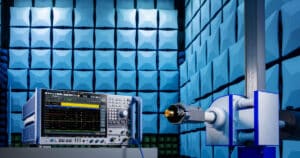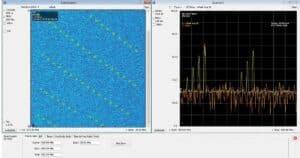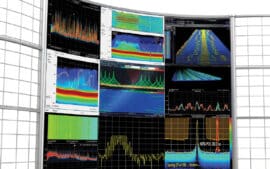At the EMV 2025 tradeshow in Stuttgart, Rohde & Schwarz displays for the first time its R&S HF1444G14 High-gain EMI microwave antenna with outstanding performance. The antenna covers a frequency range from 14.9 GHz to 44 GHz. It meets the requirements of the standards CISPR 16-1-4 and CISPR 16-2-3. Precise mechanical construction and optionally … [Read more...]
Some of the Many Stories of Medical EMI
Introduction I have been collecting stories about EMI for a long time, publishing many of them in the ‘Banana Skins’ column of The EMC Journal, www.theemcjournal.com. Some come from official reports, some from anonymous whistleblowers, some are amusing, and some concern deaths and injuries. At the present time, I have published 855 of them, all indexed by application and by … [Read more...]
EMI Basics and Board Level Shielding Design
Introduction In today’s world full of digital electronic devices, electromagnetic interference (EMI) is a major concern in both military and commercial marketplaces. Electrical equipment can become susceptible to these undesirable emissions and malfunction due to their presence. The simplest and most cost-effective method for reducing EMI is to first attack it at the board … [Read more...]
Guide to Real-Time Spectrum Analyzers: Applications
This is Part 4 in a series of articles which review the basics of conventional swept versus real-time spectrum analyzers and highlight some of the recent advances and instrument form-factors. Read Part 1, Guide to Real-Time Spectrum Analyzers: Types, here. Read Part 2, Guide to Real-Time Spectrum Analyzers: Definitions, here. Read Part 3, Guide to Real-Time Spectrum … [Read more...]
Guide to Real-Time Spectrum Analyzers: Advantages of Swept Versus Real-Time Spectrum Analyzers
This is Part 3 in a series of articles which review the basics of conventional swept versus real-time spectrum analyzers and highlight some of the recent advances and instrument form-factors. Read Part 1, Guide to Real-Time Spectrum Analyzers: Types, here. Read Part 2, Guide to Real-Time Spectrum Analyzers: Definitions, here. Swept spectrum analyzers are simpler and … [Read more...]
Can 5G Sites Be Good Neighbors?
Baseball Hall of Famer Yogi Berra was notable for his skill on the field and was equally notable for many of his quotes. “Yogi-isms” were things he often said that were both amusing and insightful. Referring to a popular restaurant, he said, “Nobody goes there anymore; it’s too crowded.” Sounds like a contradiction, but it’s easy to follow his meaning. Customers chose not to … [Read more...]
Drag Races, a Cashless Society, and the Threat of EMP
About a month ago, my 12-year-old son and I made his first-ever trip to the NHRA Drag Races near our home. It’s something that I always did with my dad, and I have looked forward to taking him ever since he was born. It’s a typical father-and-son day, wrought with loud, fast cars, terrible food, and the occasional waft of nitromethane fuel in the air. The drive is about … [Read more...]
Guide to Real-Time Spectrum Analyzers: Definitions
This is Part 2 in a series of articles which review the basics of conventional swept versus real-time spectrum analyzers and highlight some of the recent advances and instrument form-factors. Read Part 1, Guide to Real-Time Spectrum Analyzers: Types, here. Introduction There are several terms that are important when evaluating real-time spectrum analyzers. Some of these … [Read more...]
Advantages of Using a Pre-Certified Radio Frequency Module in an IoT Application
Learn the benefits of using a pre-certified radio frequency (RF) module in the design phase when building a new IoT application, and learn the implications in EMC and Radio certifications. The Internet of Things (IoT) is revolutionizing the quantity and manner in which we exchange and store information. Historically, people exchanged information through reading and … [Read more...]
Guide to Real-Time Spectrum Analyzers: Types
Introduction The spectrum analyzer is the one “go-to” tool for every RF, microwave, and EMC/EMI engineer. In recent years, a new acquisition technology has developed, based on FFT capture and digital signal processing – the real-time (RT) spectrum analyzer. This series of articles will review the basics of conventional swept versus real-time spectrum analyzers and highlight … [Read more...]
- 1
- 2
- 3
- …
- 17
- Next Page »













